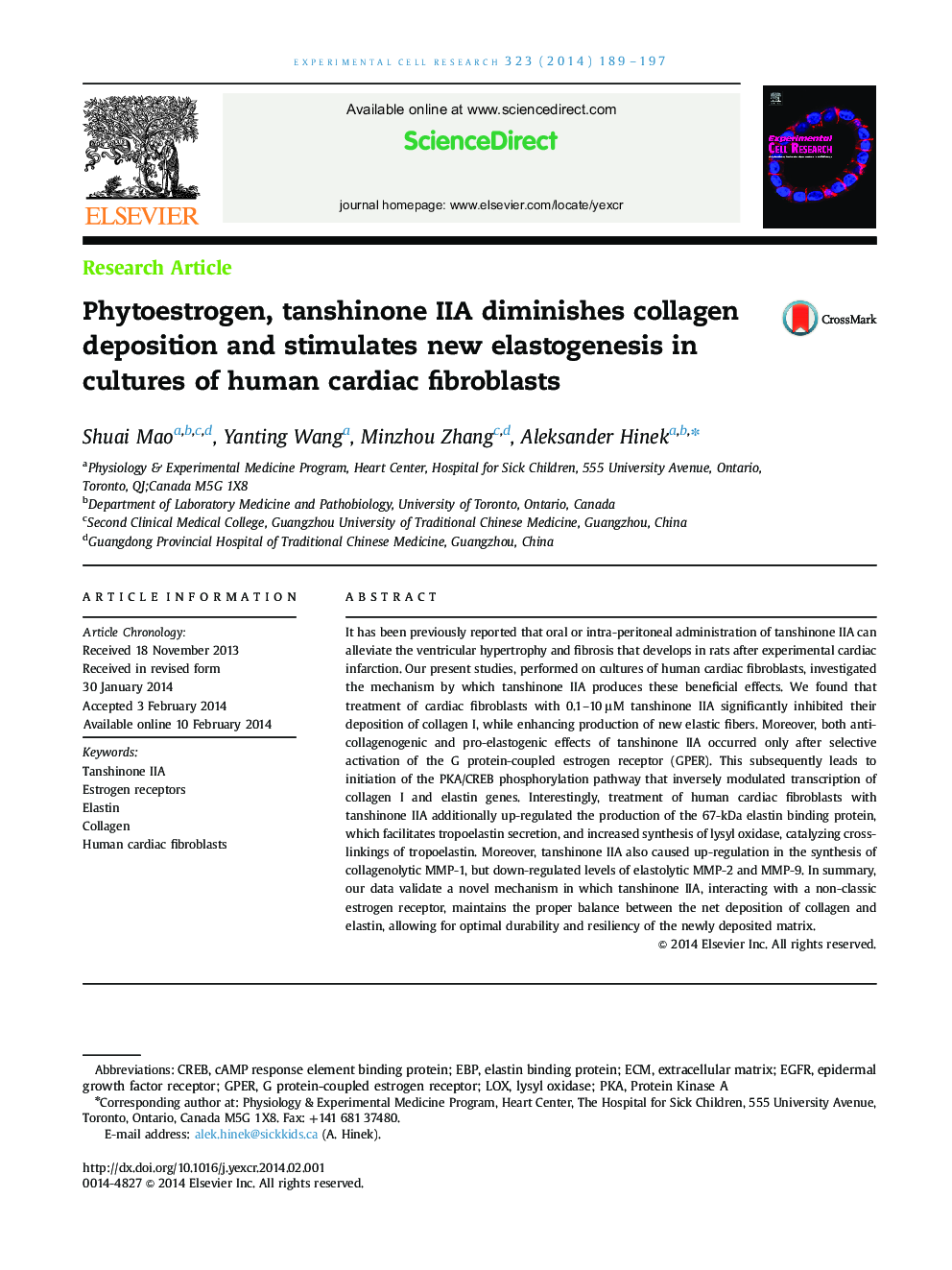| Article ID | Journal | Published Year | Pages | File Type |
|---|---|---|---|---|
| 10904042 | Experimental Cell Research | 2014 | 9 Pages |
Abstract
It has been previously reported that oral or intra-peritoneal administration of tanshinone IIA can alleviate the ventricular hypertrophy and fibrosis that develops in rats after experimental cardiac infarction. Our present studies, performed on cultures of human cardiac fibroblasts, investigated the mechanism by which tanshinone IIA produces these beneficial effects. We found that treatment of cardiac fibroblasts with 0.1-10 µM tanshinone IIA significantly inhibited their deposition of collagen I, while enhancing production of new elastic fibers. Moreover, both anti-collagenogenic and pro-elastogenic effects of tanshinone IIA occurred only after selective activation of the G protein-coupled estrogen receptor (GPER). This subsequently leads to initiation of the PKA/CREB phosphorylation pathway that inversely modulated transcription of collagen I and elastin genes. Interestingly, treatment of human cardiac fibroblasts with tanshinone IIA additionally up-regulated the production of the 67-kDa elastin binding protein, which facilitates tropoelastin secretion, and increased synthesis of lysyl oxidase, catalyzing cross-linkings of tropoelastin. Moreover, tanshinone IIA also caused up-regulation in the synthesis of collagenolytic MMP-1, but down-regulated levels of elastolytic MMP-2 and MMP-9. In summary, our data validate a novel mechanism in which tanshinone IIA, interacting with a non-classic estrogen receptor, maintains the proper balance between the net deposition of collagen and elastin, allowing for optimal durability and resiliency of the newly deposited matrix.
Keywords
Related Topics
Life Sciences
Biochemistry, Genetics and Molecular Biology
Cancer Research
Authors
Shuai Mao, Yanting Wang, Minzhou Zhang, Aleksander Hinek,
